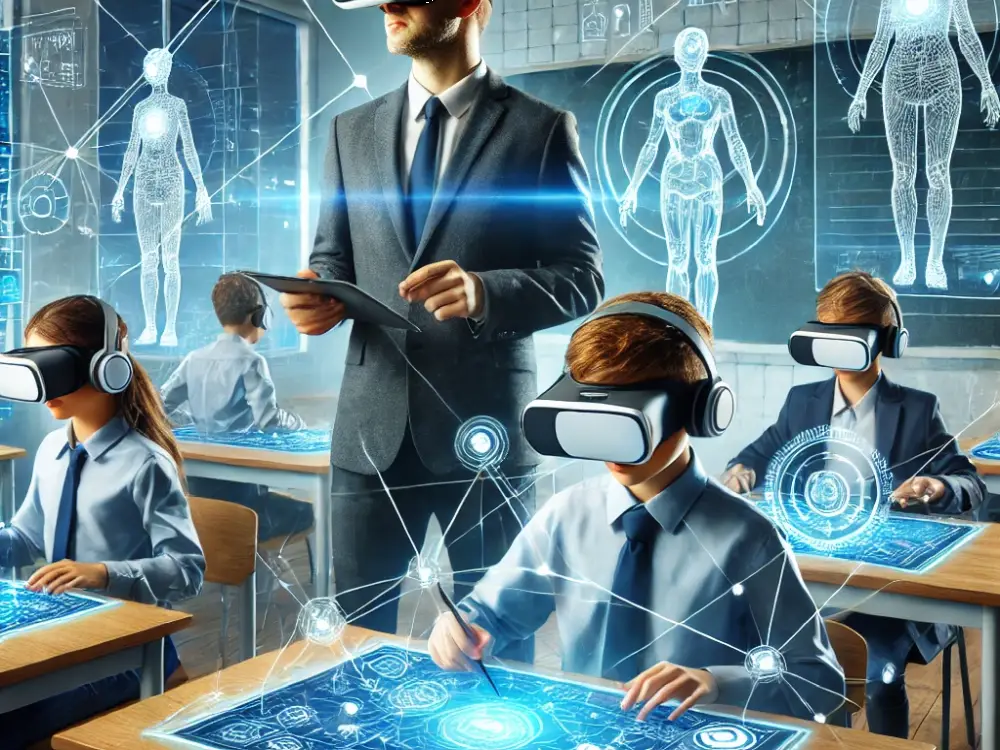Empower Your Organization Workflow with the Latest AI Tools Available
Empower Your Organization Workflow with the Latest AI Tools Available
Blog Article
Comprehensive Business Guides for Advancing Technology Education And Learning in Schools and Colleges
The combination of technology education into school and university curricula has actually become a vital necessary in preparing trainees for a progressively electronic workforce. What details techniques can be embraced to optimize their effect on both teachers and students?
Significance of Modern Technology Education
As innovation proceeds to progress at an unmatched pace, the relevance of technology education and learning has ended up being progressively apparent in today's culture. The assimilation of innovation into various elements of life demands that people have a fundamental understanding of technological ideas and applications. This understanding not only improves employability however additionally cultivates critical reasoning and analytic skills important for navigating a dynamic labor force.
In universities, technology education gears up students with the capacity to adapt to fast adjustments in industries driven by innovation. It motivates creativity and empowers students to involve with emerging innovations, from artificial knowledge to data analytics. Modern technology education promotes electronic proficiency, which is essential in a period where information is easily available yet often misleading.

Trick Elements of Effective Guides
Effective overviews for modern technology education need to incorporate numerous essential parts to make sure that students gain the most from their experiences. Initially, a distinct educational program is vital, laying out the objectives, learning results, and the skills to be developed. This educational program must be regularly upgraded to mirror the quickly advancing technical landscape, making certain significance and applicability.
2nd, detailed resources that consist of books, online materials, and hands-on tools are important. These resources should be diverse and obtainable, satisfying various discovering preferences and designs. Furthermore, integrating real-world scenarios and case research studies can improve understanding and interaction.
Third, analysis methods have to be consisted of to examine learner progress properly. These analyses need to be varied, encompassing developmental and summative assessments that align with the learning purposes.
Furthermore, professional development opportunities for educators are critical. Educating programs and workshops can outfit teachers with the most recent technical innovations and pedagogical methods.
Last but not least, fostering a collective understanding setting urges peer interaction and expertise sharing. By including these crucial components, guides for modern technology education and learning can dramatically boost the learning experience, preparing trainees for future obstacles in a progressively electronic globe.
Structure Market Collaborations
Structure solid sector collaborations is an important aspect of boosting innovation education. These partnerships between schools and services develop a vibrant environment that benefits companies, instructors, and trainees alike. By fostering partnerships with sector leaders, schools and colleges can align their educational programs with the advancing demands of the work market, making sure that students acquire relevant abilities and understanding.
The growth of teaching fellowships, instructions, and mentorship programs acts as a keystone of these collaborations. Such possibilities provide trainees with hands-on experience, improving their employability and functional understanding of technology applications. In addition, sector partners can offer understandings into emerging trends and technological developments, permitting instructors to adapt their mentor techniques appropriately.
Moreover, partnerships can facilitate accessibility to sources, such as equipment, software program, and funding for research study jobs. These payments enrich the learning environment and enable organizations to stay at the forefront of technological innovation. Eventually, building robust sector collaborations is important for cultivating a skilled workforce that fulfills the demands of today's quickly altering technical landscape, while also driving financial growth and competitiveness in the more comprehensive community.
Implementing Modern Technology Programs
Applying modern technology programs within schools needs a calculated approach that prioritizes both educational program growth and resource allocation. To start effective technology integration, organizations should initially analyze their existing facilities and recognize voids in resources, including hardware, software, and workers training. This assessment makes it possible for universities and schools to develop a customized strategy that straightens with their particular academic objectives.
Next, it is crucial to develop a thorough educational program that integrates emerging innovations and market standards. Teaming up with educators, sector experts, and stakeholders can make sure that the educational program remains relevant and efficient in preparing students for the labor force (AI Tools). Additionally, expert growth for faculty is vital, as it furnishes educators with the abilities essential to successfully teach new modern technologies
In addition, institutions must emphasize the value of hands-on knowing experiences, such as workshops and labs, that allow pupils to apply academic expertise in sensible settings. This experiential approach enhances involvement and cultivates essential reasoning. Protecting sustainable funding via grants and partnerships can assist keep and increase technology programs, ensuring long-lasting success and flexibility in an ever-evolving technological landscape.
Determining Success and Results
Evaluating the success and results of innovation education programs is necessary for confirming their effect and content directing future renovations. Effective measurement structures ought to include both qualitative and measurable metrics, providing a check my reference detailed sight of program efficiency. Trick efficiency indicators (KPIs) such as trainee registration numbers, retention prices, and course conclusion portions offer important measurable information.

Integrating standardized analyses can additionally evaluate trainees' technological proficiencies and readiness for the workforce. Benchmarking against similar establishments allows for contextually appropriate contrasts, highlighting locations for growth.
Inevitably, the continuous examination of modern technology education programs fosters a culture of renovation, guaranteeing that they progress in alignment with market demands and academic criteria. By methodically gauging success, establishments can not just demonstrate liability to stakeholders but also boost their offerings, thus improving the discovering experience and preparing trainees for the ever-changing technical landscape.
Conclusion

The assimilation of modern technology Insurance education and learning into institution and college educational program has come to be a critical necessary in preparing trainees for an increasingly digital workforce.As technology continues to develop at an unmatched speed, the value of innovation education and learning has actually ended up being progressively obvious in today's culture.In instructional establishments, modern technology education and learning furnishes pupils with the capacity to adapt to rapid adjustments in sectors driven by development. By prioritizing innovation education and learning, institutions can grow a generation of notified citizens capable of leveraging modern technology for social and personal advancement. The execution of durable analysis approaches makes it possible for establishments to measure success and outcomes, ultimately boosting the overall efficiency of modern technology education and learning campaigns and preparing trainees for future challenges.
Report this page